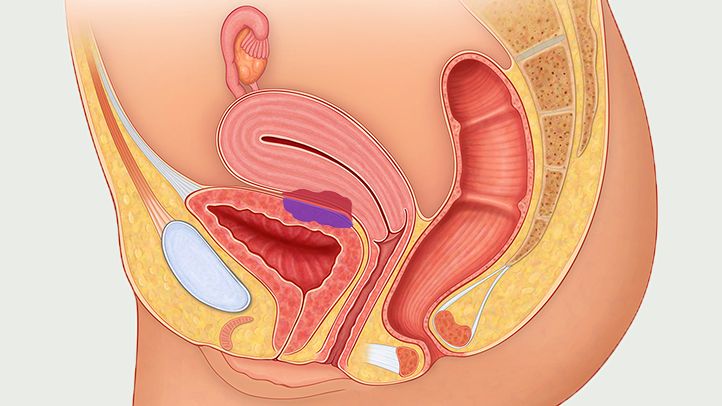INTRODUCTION
Endometriosis is a medical disorder in which endometrial tissues which normally is seen in the uterine bed is found outside the uterus. The tissues could be found in the ovary, fallopian tube, pelvis, bladder, abdomen, lungs and several other parts of the body.
Endometriosis is usually accompanied by severe pains because these tissues will bleed and get trapped in the organ around the time of the menstrual cycle.
It is a common disorder in women and the severity of symptoms varies depending on its location. About 1 in every 10 women suffer from endometriosis. In women with fertility challenges, it could be found in as many as 3 out of 10 women. Women with relatives suffering from endometriosis have an increased risk of suffering from the disorder.
It is a cause of great distress to many women as it negatively impacts their quality of life.
SYMPTOMS
A lady with endometriosis may present with no symptoms. A diagnosis may be made intra-operatively during surgery for some other conditions. However, most clients with the condition may complain of the following.
- Painful menses
Also called dysmenorrhea, most ladies will experience severe pelvic/back cramps several days before and after menses. This is sometimes associated with heavy vaginal bleeding.
- Chronic pelvic pain
This pain could be constant and debilitating. It is usually related to the depth of tissue penetration by endometriosis.
- Painful Intercourse
Common among women with endometriosis, it is usually caused by the presence of nodules in the uterosacral ligament [one of the supporting structures of the uterus].
- Difficulty getting pregnant
Endometriosis could lead to infertility by causing damage to the ovaries and fallopian tubes.
CAUSES
The exact cause of endometriosis is unknown. Possible reasons for the condition include:
- Retrograde menstruation
Menstrual blood is thought to flow backwards through the fallopian tubes and into the pelvic cavity. The endometrial cells contained within the blood stick to the pelvic sidewalls and organs, and begin to grow.
- Lymphatic/vascular spread
Endometrial cells are thought to spread through the lymphatic channels and blood vessels to other parts of the body.
- Coelomic metaplasia
The epithelium lining the abdomen could be transformed into endometrial cells by hormones or immune factors.
- Immunologic disorder
The body immune may find it difficult to identify and destroy endometrial tissue growing outside the uterus.
PREVENTION
The risk of acquiring a PID can be reduced by:
- Being faithful to one faithful partner
- Use a condom if you’re having casual sex
- Delay sexual intercourse until you are older as a lady
- If you have an IUCD inserted, see your doctor regularly
- Get tested if you feel you have a PID
- Have your partner tested if you have been infected with a sexually transmitted disease
COMPLICATION
About half of all women with endometriosis have challenges getting pregnant due to damage to the fallopian tubes, ovarian tissue or the sperm and egg by the disease.
However, in mild cases, women could still get pregnant.
DIAGNOSIS
Diagnosing endometriosis usually begins with a history of the symptoms.
At the health facility, your doctor may perform a general examination and elicit pains in your abdomen. Pelvic examination may reveal a cystic mass or elicits pains when the cervix is touched [cervical motion tenderness].
A transvaginal scan may be useful in picking up endometriomas.
Magnetic Resonance Imaging [MRI] may assist the surgeons in planning for the procedure to remove the implants.
Laparoscopy may also be carried out to have a good view of the pelvic organs and to visualize the endometrial deposits. It is the gold standard in the diagnosis of endometriosis and the disease could be treated at the same time.
TREATMENT
Treatment for endometriosis commences with counselling. The approach your doctor chooses depends on the severity of the disease.
Medical Treatment
This involves the use of several medications including:
- Pain relief to help reduce pains during menses. Medications include NSAIDs such as Ibuprofen, mefenamic acid, etc.
- Hormonal treatment use may help eliminate menses and reduces pains by blocking the production of ovarian hormones. Medications used include oral contraceptive pills, progesterone such as Mirena, Gonadotropin-Releasing Hormone Agonists, and other medications.
Surgical Treatment
This could be conservative or radical.
Conservative management involves ablation to remove the endometriotic deposits. This is usually done through laparoscopy.
Radical management involves the removal of the uterus and ovaries. This may not be the best modality of treatment especially for clients who are desirous of children. Also, removal of the ovaries induces menopause with its attendant problems.
WHEN TO SEE A DOCTOR
You are advised to see your doctor if you experience the symptoms listed above.
Early diagnosis usually helps with better management of the disease.
Ladies with the disease are counselled to start having children early because the disease is progressive.

